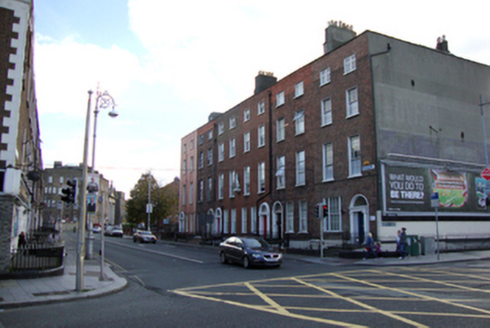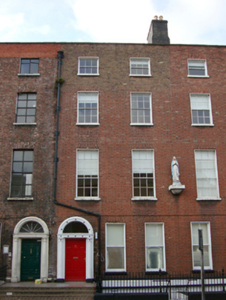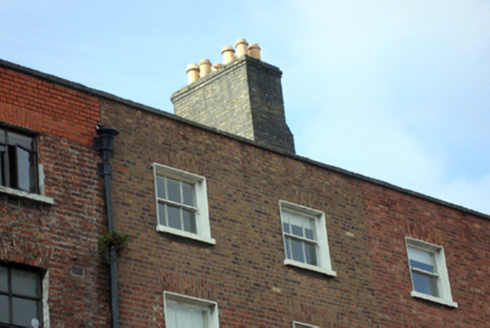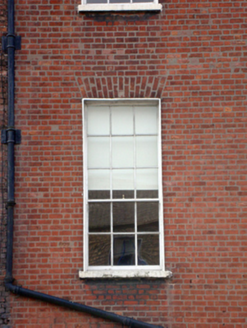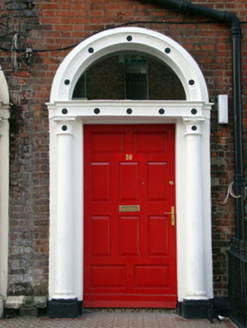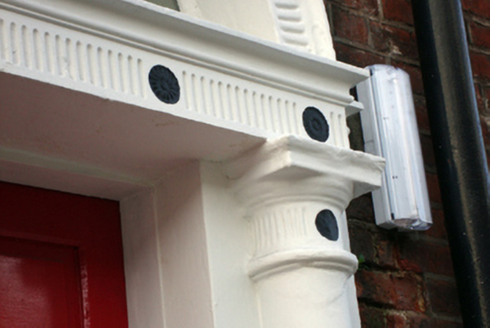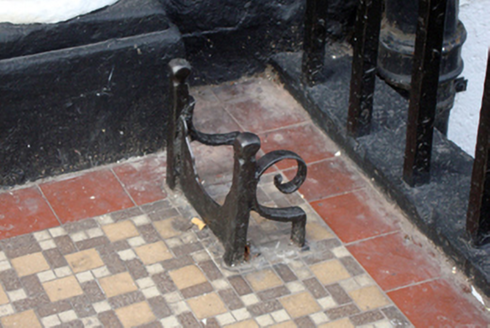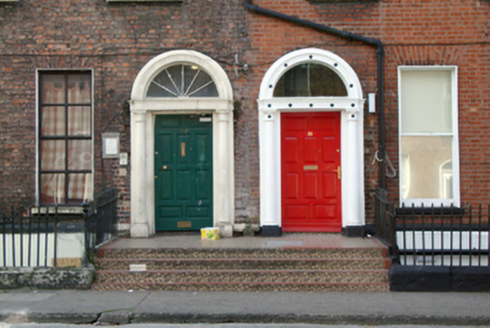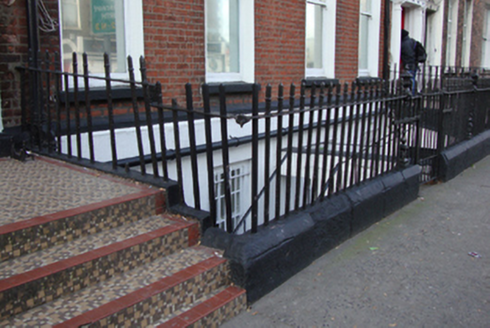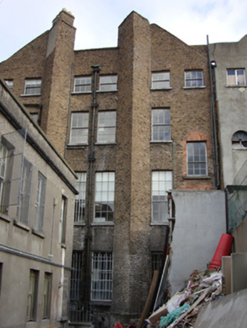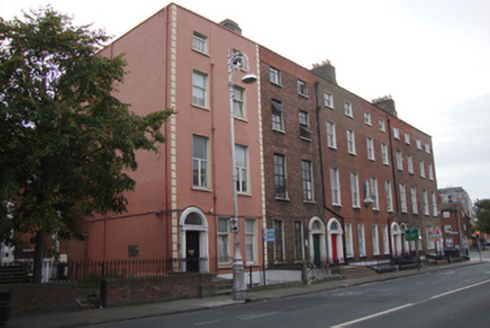Survey Data
Reg No
50010767
Rating
Regional
Categories of Special Interest
Architectural, Artistic, Cultural
Original Use
House
In Use As
Apartment/flat (converted)
Date
1810 - 1830
Coordinates
315788, 235657
Date Recorded
06/10/2011
Date Updated
--/--/--
Description
Terraced four-storey house over raised basement, built c.1820, having three-bay ground floor and two-bay upper floors. Pitched slate T-plan roof, gabled to rear, with yellow brick stepped chimneystack and replacement terracotta chimney pots shared with No. 39 to north and canted yellow brick chimneystack abutting rear gable. Original flared lead hopper and downpipe breaking through front parapet wall shared with No. 37 to south. Red brick walls rebuilt at third floor level and laid in Flemish bond to painted granite plinth course above rendered basement wall. Painted statue of Virgin Mary on projecting concrete render plinth to first floor at party wall to north. Gauged brick flat-arched window openings, with painted patent reveals and painted granite sills, and timber sliding sash windows, one-over-one pane to ground floor, nine-over-six pane to first floor, six-over-six pane to second floor and basement, and three-over-three pane to top floor. Square-headed openings to rear with timber sliding sash windows of varying configurations and stair hall window opening modified. Round-headed door opening with painted stone doorcase comprising engaged Doric columns set on granite base with paterae and fluting to capitals, cornice and archivolt. Replacement timber door and plain fanlight. Door opens onto mosaic-covered platform with wrought-iron bootscraper and mosaic covered steps shared with No. 37 to south, enclosed by wrought-iron railings on painted granite plinth wall with cast-iron corner post returning to north to enclose basement area. Rear elevation laid in yellow brick in English garden wall bond with pitched parapet wall and projecting canted chimney breast.
Appraisal
No. 38 is one of a terrace of six east-facing two-bay houses, built as a unified terrace, close to an important junction with Dorset Street Lower. Carefully reproduced timber sash windows, combined with mellow red brick and rare surviving lead rainwater goods make this house a particularly significant part of the ensemble. The mirror-image plans, indicated by doorcase paired with its neighbour to the south, add pleasing variety and rhythm to this fine late-Georgian terrace. The retention of iron railings to the basement area, and the steps to the entrance, provide appropriate context. Gardiner Street Upper runs northwest from Mountjoy Square to Dorset Street Lower and was developed by Luke Gardiner c.1790-1820. Both ends of Gardiner Street Upper comprise two-bay four-storey over basement terraces but development was piecemeal thereafter, and the central section of the street was infilled with later Victorian terraces and semi-detached villa-style red brick houses and not completed until c.1880. The east side of the street is lined with a unified terrace of smaller two-bay three-storey over basement houses, built c.1840, and the Catholic Church of Saint Francis Xavier, with its tetrastyle Greek Ionic portico *(1829-32). 38-39 Gardiner Street Upper was the home of the pawnbroker, Ellen M'Guinness, who Father John Conmee salutes in Episode 10: Wandering Rocks of "Ulysses" (1920) by James Joyce (1882-1941).
